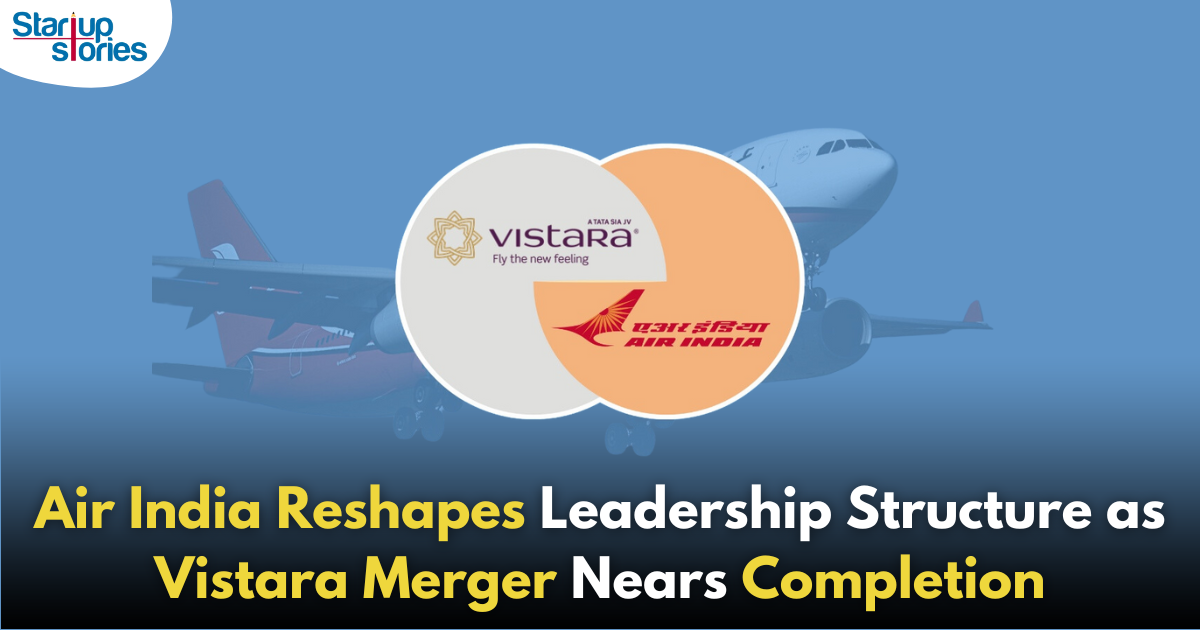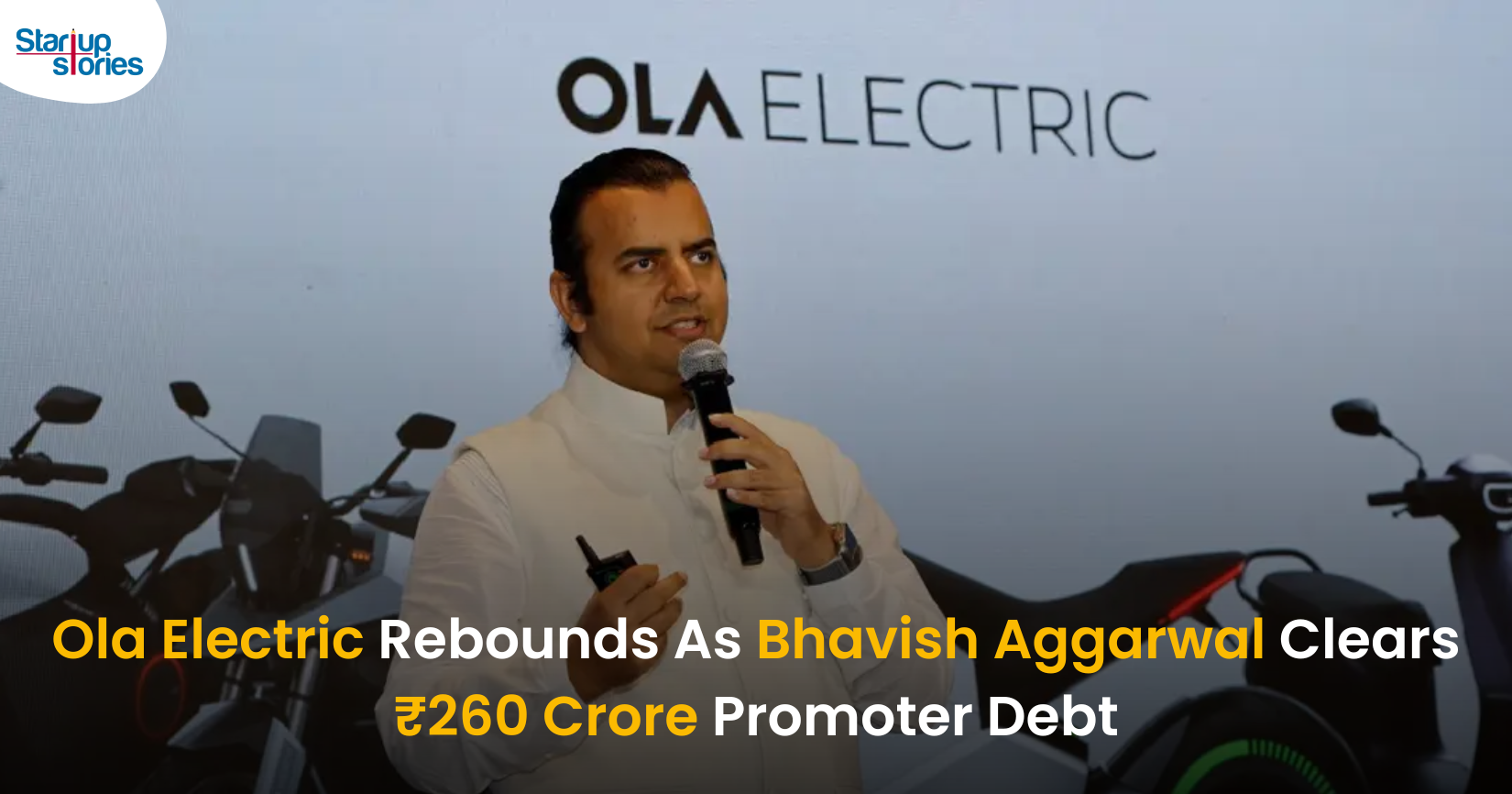Latest News
Air India Restructures Senior Leadership Ahead of Vistara Merger!

As Air India Group prepares for its anticipated merger with Vistara, a significant reshuffle of senior management was announced on November 8, just days before the merger is set to take effect on November 12. This strategic restructuring aims to streamline operations and integrate the two airlines effectively, marking a pivotal moment in the consolidation of Tata Group’s airline ventures.
Key Management Changes
The reshuffle includes several notable appointments and role changes within Air India’s leadership team:
- Vinod Kannan, currently the CEO of Vistara and serving as Chief Integration Officer for the merger, will continue in this capacity post-merger. He will also join Air India’s management committee and report directly to CEO Campbell Wilson.
- Deepak Rajawat, who has been Vistara’s Chief Commercial Officer, will assume the role of Chief Financial Officer for Air India Express, the low-cost carrier of the group. He will report to Air India Express CEO Aloke Singh and assist Group CFO Sanjay Sharma with strategic initiatives.
- Vikas Agarwal, the current CFO of Air India Express, will transition to a new role within Air India, although specifics have yet to be disclosed.
- Hamish Maxwell, Vistara’s Senior Vice President of Flight Operations, will take on an advisory position with Air India Express, assisting CEO Aloke Singh.
- Pushpinder Singh, currently the Chief Operations Officer at Air India Express, will return to flying duties, with his successor to be announced soon.
Additionally, several members of Vistara’s leadership team will see changes: Deepa Chadha, Senior Vice President of HR & Corporate Affairs, and Vinod Bhatt, Chief Information Officer, are set to take on senior roles within other Tata group companies. Furthermore, Vistara’s CFO Niyant Maru, who extended his tenure beyond retirement to oversee the merger’s completion, will retire at the end of his current term.
Strategic Context
This restructuring is part of a broader strategy as Tata Group consolidates its airline operations from four brands—Air India, Vistara, AirAsia India, and Air India Express—into two primary entities. The merger aims to create a more competitive airline capable of leveraging synergies across its operations while enhancing customer service and operational efficiency.
Air India CEO Campbell Wilson emphasized the complexities involved in merging four airlines into two during a period of significant growth and transformation. “Over the past two years, Tata’s four airlines have been working intensively to prepare for and execute one of the most complex mergers in aviation history,” he stated. This restructuring formalizes a leadership team that combines expertise from all four airlines to guide them into the next phase.
Implications for Employees and Operations
While most employees from Vistara are expected to transition into the merged entity, some roles may be eliminated due to redundancies as Air India has already filled many positions. The integration process is being managed by a team comprising senior executives from both airlines alongside consultants from Boston Consulting Group.
The merger is also significant for Singapore Airlines (SIA), which holds a 25.1% stake in the combined Tata airline entity. The integration is expected to enhance SIA’s position in one of the world’s largest aviation markets.
Conclusion
As Air India Group approaches the final stages of merging with Vistara, these leadership changes reflect a strategic effort to ensure a smooth transition and operational efficiency. By consolidating leadership roles and integrating expertise from both airlines, Air India aims to enhance its competitive edge in the aviation market while addressing customer needs more effectively. As this merger unfolds, stakeholders will be watching closely how these changes impact service delivery and operational performance in one of Asia’s most dynamic airline sectors.
Latest News
How Pronto Is Redefining 10-Minute Home Services in India with a $25 Million Fundraise

Home services startup Pronto is in advanced talks to raise about $25 million at a near-$100 million valuation, underscoring strong investor confidence in India’s fast-growing 10-minute home services market. This potential round would be the company’s third major funding milestone after its $2 million seed and $11 million Series A in 2025, backed by marquee investors such as General Catalyst, Glade Brook Capital, Bain Capital and new participant Epiq Capital. The fresh capital is expected to further strengthen Pronto’s positioning as a leading tech-led household help platform for urban consumers.
Pronto operates a 10-minute on-demand home-services platform that connects users with trained, background-verified workers for everyday tasks like sweeping, mopping, utensil cleaning, laundry and basic cooking. Using a hub-and-spoke, shift-based model, the startup stations workers at hyperlocal hubs, enabling sub-10-minute fulfilment and more predictable earnings compared to the informal domestic-help market. Founded in 2024 by Anjali Sardana and based in Delhi NCR, Pronto has already expanded from Gurugram into major cities such as New Delhi, Mumbai, Bengaluru and Pune, and is handling around 6,000 daily bookings with nearly 1,300 active professionals as of December 2025.
The upcoming $25 million fundraise is expected to be used to enter more metros, deepen presence in existing neighbourhoods with additional hubs and upgrade Pronto’s technology for smarter routing, shift planning and real-time operations. A significant portion of the capital will also go into training, retention and benefits for its workforce to maintain consistent service quality at scale, especially as competition heats up from rivals like Snabbit and Urban Company in the rapid home services space. This near-$100 million valuation not only validates Pronto’s model but also highlights a broader shift toward organised, tech-driven domestic-help solutions in India’s largely informal home-services market.
Latest News
Bhavish Aggarwal Sells ₹325 Crore Ola Electric Stake, Retains Control

Bhavish Aggarwal has sold Ola Electric shares worth about ₹325 crore over three consecutive trading sessions, primarily to fully repay a promoter-level loan of ₹260 crore and release all pledged promoter shares. Despite the stake sale, he continues to hold a significant shareholding of over 34 percent in Ola Electric, and the company has clearly stated that there is no change in promoter control or his long-term commitment to the business. This one-time, limited monetisation at the promoter’s personal level is positioned as a structural clean-up rather than a signal of reduced confidence in the company.
The transactions, executed through open-market bulk deals, included an initial sale of about 2.6 crore shares worth roughly ₹92 crore at an average price of ₹34.99 per share, followed by additional trades of around ₹142 crore and ₹90 crore, taking the total sale value to approximately ₹324–325 crore. As a result, Aggarwal’s stake has fallen by a little over 2 percent, while all previously pledged promoter shares about 3.93 percent of Ola Electric’s equity are being released, removing the overhang and risk typically associated with pledged stock. The company has also clarified that these deals do not involve any capital raise or dilution by Ola Electric itself, which is important for investors tracking promoter stake and governance.
The share sale came at a time when Ola Electric’s stock had been under pressure, even hitting an all-time closing low amid concerns around growth, competition and heavy promoter selling. However, once the company confirmed that the stake sale was complete and all promoter-level pledges would be cleared, the stock rebounded sharply, gaining around 9–10 percent as markets welcomed the removal of this technical overhang. For investors, the focus is now expected to shift back to Ola Electric’s core fundamentals EV sales growth, margins, and market-share performance in India’s two-wheeler EV segment while the reduced promoter debt risk and continued high promoter holding offer some comfort on long-term alignment.
Latest News
Kuku FM’s $200 Million IPO: Mebigo Labs Hires Top Bankers to Lead Public Listing

Kuku FM’s parent company, Mebigo Labs, has hired leading investment banks to prepare for a 200 million dollar IPO in India, marking a major milestone for the country’s digital audio ecosystem. The Mumbai-based company has reportedly appointed Kotak Mahindra Capital, Axis Bank and Morgan Stanley’s India unit to manage the proposed share sale, which is likely to be launched on Indian stock exchanges once key regulatory steps are completed. This move signals strong intent to tap public markets and test investor appetite for subscription-led regional audio platforms in India.
The planned IPO proceeds are expected to help Kuku FM expand its content library, strengthen its regional language offerings and invest in technology to enhance user experience. With a focus on Hindi, Marathi, Tamil and other Indian languages, Kuku FM aims to capture the fast-growing audience in Tier 2 and Tier 3 cities seeking affordable audiobooks, courses and storytelling content. The funds could also provide additional firepower for marketing, partnerships and product innovation, helping the platform compete more aggressively in India’s crowded digital entertainment and creator economy landscape.
Founded in 2018, Kuku FM has built a subscription-driven business model and has reportedly scaled to millions of paying users, backed by multiple funding rounds from prominent investors. Its decision to pursue a 200 million dollar IPO positions it as one of the first major Indian audio platforms to attempt a public listing, potentially paving the way for other podcast and niche content startups to follow. As the IPO process moves forward, Kuku FM’s performance in the public markets will be closely watched as a key indicator of how investors value regional, knowledge-first audio platforms in India’s booming digital economy.















código de referencia de Binance
May 29, 2025 at 8:08 pm
Thanks for sharing. I read many of your blog posts, cool, your blog is very good.
注册
August 20, 2025 at 3:39 pm
Your point of view caught my eye and was very interesting. Thanks. I have a question for you.
注册
August 31, 2025 at 1:55 am
Can you be more specific about the content of your article? After reading it, I still have some doubts. Hope you can help me. https://www.binance.com/en-IN/register?ref=UM6SMJM3
Binance账户创建
September 1, 2025 at 8:49 am
Thank you for your sharing. I am worried that I lack creative ideas. It is your article that makes me full of hope. Thank you. But, I have a question, can you help me? https://www.binance.info/en/register-person?ref=JHQQKNKN
binance account
October 9, 2025 at 2:58 am
Your article helped me a lot, is there any more related content? Thanks!
iwin
November 5, 2025 at 12:47 pm
iwin – nền tảng game bài đổi thưởng uy tín, nơi bạn có thể thử vận may và tận hưởng nhiều tựa game hấp
站群程序
November 7, 2025 at 11:39 am
采用高效谷歌站群策略,快速提升网站在搜索引擎中的可见性与权重。谷歌站群
Kuwin
November 10, 2025 at 4:49 am
kuwin sở hữu kho game đa dạng từ slot đến trò chơi bài đổi thưởng, mang đến cho bạn những giây phút giải trí tuyệt vời.
谷歌外推
November 10, 2025 at 1:44 pm
采用高效谷歌外推策略,快速提升网站在搜索引擎中的可见性与权重。谷歌外推
站群程序
November 11, 2025 at 5:44 pm
搭载智能站群程序,自动化搭建与管理,为SEO项目提供核心驱动力。站群程序
MM88
November 13, 2025 at 7:04 pm
Với giao diện mượt mà và ưu đãi hấp dẫn, MM88 là lựa chọn lý tưởng cho các tín đồ giải trí trực tuyến.
GO88
November 16, 2025 at 1:32 pm
Tham gia cộng đồng game thủ tại Go88 để trải nghiệm các trò chơi bài, poker phổ biến nhất hiện nay.
MM88
November 16, 2025 at 7:56 pm
Khám phá thế giới giải trí trực tuyến đỉnh cao tại MM88, nơi mang đến những trải nghiệm cá cược thể thao và casino sống động.
J88
November 22, 2025 at 4:57 pm
Đến với J88, bạn sẽ được trải nghiệm dịch vụ cá cược chuyên nghiệp cùng hàng ngàn sự kiện khuyến mãi độc quyền.
princess casino freispiele
December 20, 2025 at 10:56 am
Mit Merkur24 bietet der deutsche Glücksspiel-Pionier nun bundesweit seine Spiele
an. Kein Wunder also, dass auch online immer mehr Echtgeld Casinos
die Spiele für sich entdecken. Außerdem gibt es weitere Gratischips für besondere Aktionen, zum Beispiel dann, wenn Sie sich täglich einloggen. Einzahlungsbonus, wie er bei online
Casinos an neue Kunden vergeben wird, suchen wir bei Merkur24
vergeblich.
Man muss vor jedem (!) Spiel mindestens eine 30 sekündige Werbung anschauen, bevor
man spielen kann. Seit dem letzten Update habe ich aber wirklich keine
Lust mehr zu spielen. Ihr könnt also auch in der Merkur24 App auf iOS oder Android spielen.
Die Merkur App bietet ein nahtloses Spielerlebnis für Spieler, die es vorziehen, ihre Lieblings-Casinospiele auch
unterwegs zu genießen. Mit Merkur24 können die
Spieler den Nervenkitzel von Casinospielen bequem von zu Hause aus genießen.
Schnapp dir die Festtagslaune und komm vorbei – wir
machen die Feiertage garantiert spielend besser!
References:
https://online-spielhallen.de/total-casino-freispiele-alles-was-sie-wissen-mussen/